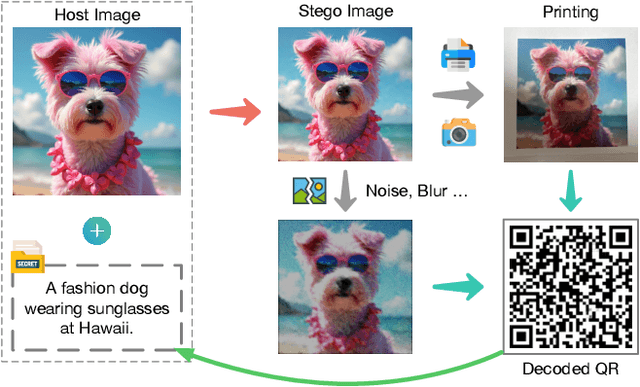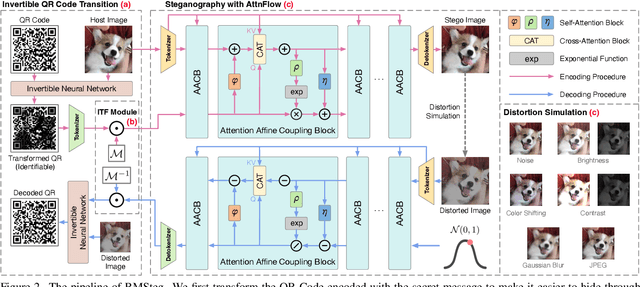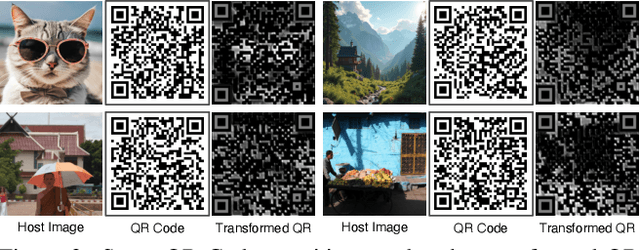Shenzhuo Zhang
PPRSteg: Printing and Photography Robust QR Code Steganography via Attention Flow-Based Model
May 26, 2024



Abstract:Image steganography can hide information in a host image and obtain a stego image that is perceptually indistinguishable from the original one. This technique has tremendous potential in scenarios like copyright protection, information retrospection, etc. Some previous studies have proposed to enhance the robustness of the methods against image disturbances to increase their applicability. However, they generally cannot achieve a satisfying balance between the steganography quality and robustness. In this paper, we focus on the issue of QR Code steganography that is robust to real-world printing and photography. Different from common image steganography, QR Code steganography aims to embed a non-natural image into a natural image and the restored QR Code is required to be recognizable, which increases the difficulty of data concealing and revealing. Inspired by the recent developments in transformer-based vision models, we discover that the tokenized representation of images is naturally suitable for steganography. In this paper, we propose a novel QR Code embedding framework, called Printing and Photography Robust Steganography (PPRSteg), which is competent to hide QR Code in a host image with unperceivable changes and can restore it even if the stego image is printed out and photoed. We outline a transition process to reduce the artifacts in stego images brought by QR Codes. We also propose a steganography model based on normalizing flow, which combines the attention mechanism to enhance its performance. To our best knowledge, this is the first work that integrates the advantages of transformer models into normalizing flow. We conduct comprehensive and detailed experiments to demonstrate the effectiveness of our method and the result shows that PPRSteg has great potential in robust, secure and high-quality QR Code steganography.
 Add to Chrome
Add to Chrome Add to Firefox
Add to Firefox Add to Edge
Add to Edge